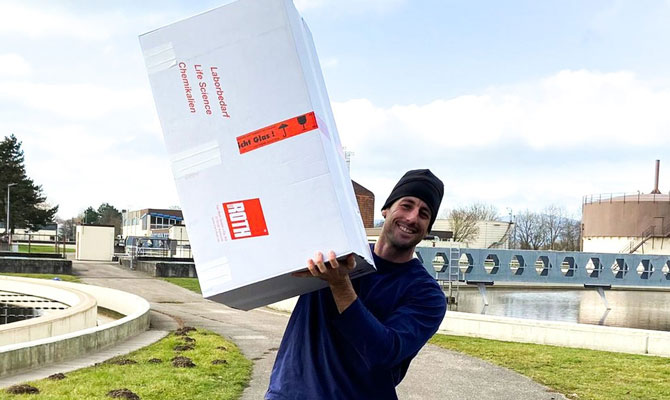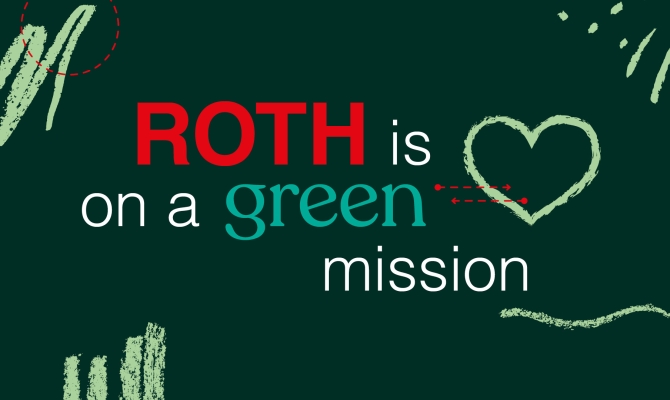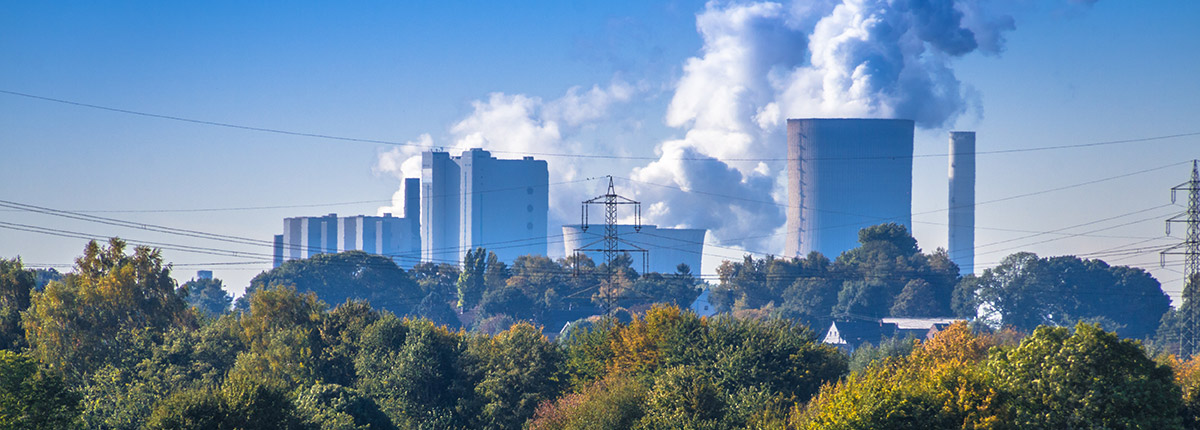
Sustainable CO2 recycling – the CETCH cycle
In addition to CO2 reduction and natural carbon recycling, technical CO2 fixation will be a key measure against global warming in the future. Could innovative methods such as artificial photosynthesis play a key role? We explain the idea and development status of this award-winning method and take a look into the future.
A way out of our self-made greenhouse?
Recycling is a good thing if the necessary processes are efficient and sustainable, as it saves valuable resources. Even better, however, is to avoid producing waste materials in the first place. A sensible combination of recycling and waste avoidance is usually the most sustainable way to counteract dwindling resources and increasing pollution.
Recyclable materials such as paper and glass achieve high recycling rates in Germany. The situation is different for plastic waste: More than half of this waste is incinerated in Germany because recycling is either only possible to a limited extent, or inefficient. Here, too, avoidance is the order of the day if we want to reduce this waste.
Combustion always means (at least currently) climate-damaging emissions, which, in terms of their consequences, are in a sense the number one waste facing humanity. Since the beginning of the industrial revolution, the concentration of carbon dioxide (CO2) alone in the air has increased by about 40 to 50%. According to the scientific knowledge base, this increase is fuelling the greenhouse effect and changing our climate. The consequences are already noticeable. Here, too, the aim is for a drastic reduction in emissions.
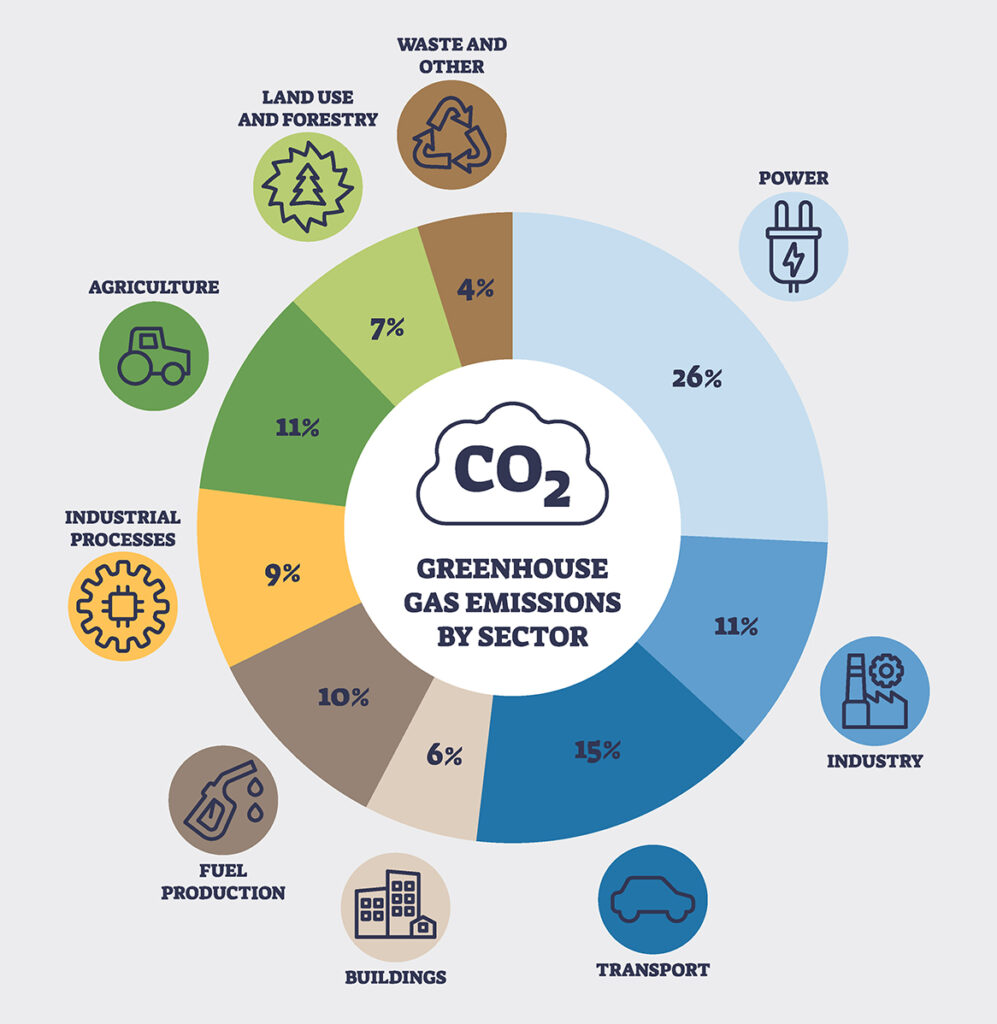
Under the Paris Climate Agreement of 2015, 194 states are currently committed to limiting the global temperature increase to 1.5 degrees Celsius, and in any case well below two degrees. This can only be achieved if, in the second half of this century, the maximum amount of climate-damaging gases emitted is the amount removed from the atmosphere by carbon sinks (forests, bogs, seagrass beds), i.e. CO2 neutrality is guaranteed. States are trying to implement this through different national programmes and laws. An important building block would be ‘decarbonisation’ of the economy, however this has buy-in problems acceptance and is difficult to enforce.
So, will the small steps we can take be enough? Various experts now believe that not even the 2-degree target can be achieved if current global emission trends continue. If we cannot prevent massive emissions of CO2 from being released into the atmosphere, could we pull the other lever and recycle much more CO2 from the air?
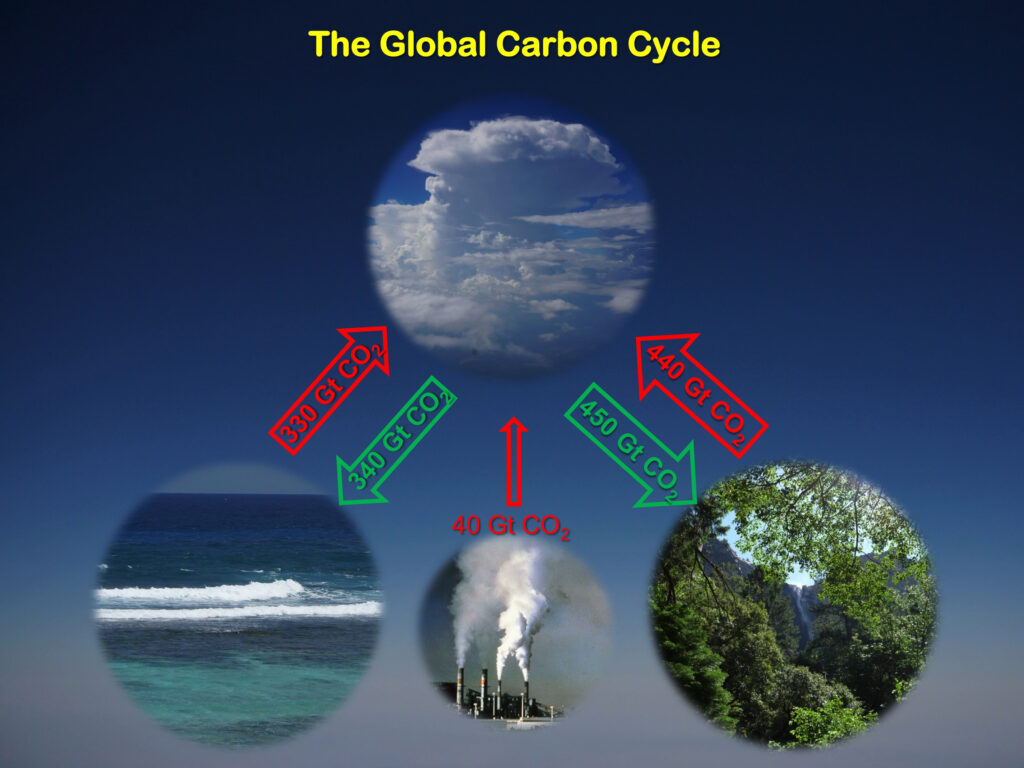
Carbon recycling – surpassing the example of nature
In order to master the ecological and social challenges of climate change, “we must find new ways to sustainably remove excess CO2 from the air and convert it into something useful”, explains Tobias Erb, director of the Marburg Max Planck Institute for Terrestrial Microbiology. By this he means nothing other than carbon recycling.

In principle, nature does this, since plants fix carbon dioxide from the air through photosynthesis. Through a step-by-step process – the Calvin cycle – they produce glucose for their metabolism and oxygen, which almost all living things need to breathe. Theoretically, one could try to tackle the problem of increasing climate-damaging CO2 concentrations in our atmosphere with higher agricultural and forestry productivity: more plants = more CO2 recycling! Problem: The CO2-binding enzyme of the Calvin cycle in plants, ribulose-1,5-bisphosphate carboxylase/oxygenase (RuBisCo for short) works relatively slowly and incorrectly. In every fifth reaction, RuBisCo captures an oxygen molecule O2 instead of CO2.
However, nature provides CO2-fixing enzymes in the metabolism of microorganisms that work much faster, more accurately and more efficiently. In this “treasure trove”, the biologist and chemist Erb specifically looked for enzymes that bind CO2 with high efficiency and also convert the gas into other useful organic molecules.
The goal: to build a synthetic Calvin cycle.
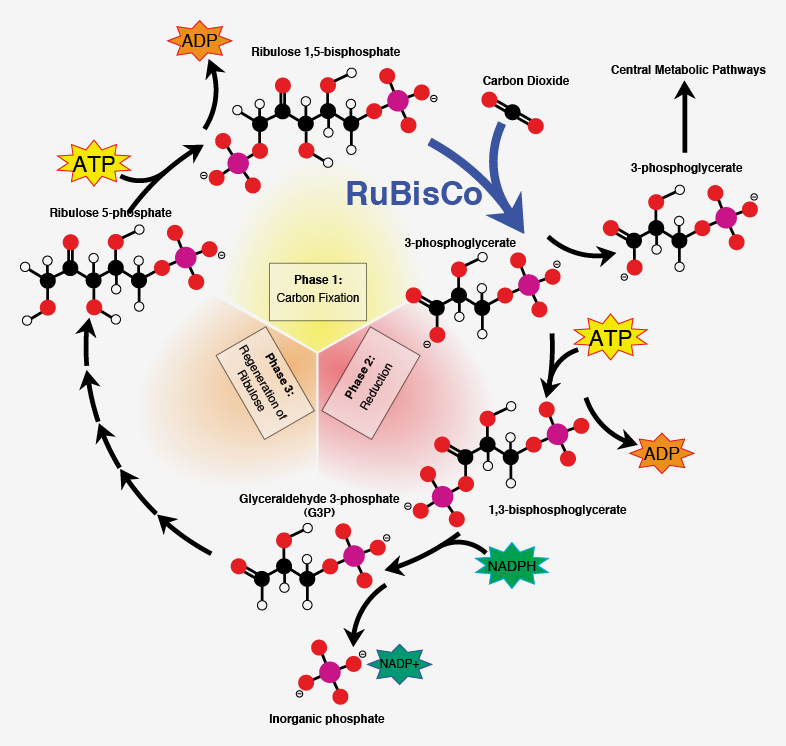
CETCH me if you can
For his work, which paves the way for more sustainable fixation of CO2 as a greenhouse gas, Tobias Erb has been awarded several highly-coveted science prizes, including in 2022 with the Merck Future Insight Prize, and 2024 with the Leibniz Prize of the German Research Foundation.
However, Erb and his team also did a lot to earn the awards. A suitable central enzyme was indeed quickly found and isolated from a purple bacterium: crotonyl-CoA carboxylase/reductase (CCR). This enzyme worked almost flawlessly, and is 20 times faster than RuBisCo. But then came the real hard work. In order to find additional enzymes for a complete and technically optimally usable synthetic Calvin cycle, Erb and his colleagues at the MPI for Terrestrial Microbiology screened more than 50 million genes and 40,000 proteins from international databases. In the end, 17 enzymes from nine organisms up to humans remained, including three “designer enzymes” that the scientists had developed from natural enzymes and which now worked more precisely or catalysed other reactions. In just two years, Erb’s team combined these enzymes in vitro to create a “robust, functioning, optimised cycle.” Based on the central, CO2-fixing enzyme, Erb named the result the crotonyl-CoA/ethylmalonyl-CoA/hydroxybutyryl-CoA cycle.
This synthetic cycle, called the CETCH cycle for short, is able to bind around 20 percent more CO2 using the same amount of light energy as natural photosynthesis. And the immense screening work paid off: in Erb’s “basic model” of artificial photosynthesis, a compound called glyoxyl acid is formed at the end; however, the cycle can be changed in such a way that raw materials for biodiesel or other organic substances can be formed instead.
The decisive step out of the test tube
The real breakthrough, however, only came when the researchers were able to transfer the artificial photosynthesis from the laboratory glassware into living cells of the Escherichia coli bacterium. What works in vitro does not necessarily have to work in vivo, in the living organism, where thousands of genes and proteins “interfere” and can influence the process.
The researchers first introduced all the genes that code for the enzymes of the CETCH cycle into E.coli. As a marker, i.e. to prove that CO2 can actually be processed into larger molecules by artificial photosynthesis, they also incorporated enzymes that produce the rather large molecule succinyl-CoA. As it turned out, the entire cycle from CO2 uptake to succinyl-CoA production in E. coli actually proceeded without errors. It is true that the bacterium cannot obtain energy from sunlight and, unlike plants, must also be supplied with carbohydrates. Nevertheless, it was demonstrated that a complete artificial metabolic pathway for CO2 fixation can be incorporated into a living cell.
In this case, E.coli served as a model organism. The longer-term goal of the researchers is to transfer the artificial cycle back to plant cells in order not only to generate more efficient CO2 sinks, but also to be able to synthesize substances for the chemical industry directly and without technical effort, using solar energy and carbon dioxide from the air.
Promoting CO2 as a resource
A topic with potential – recognized by both research and policy: in 2022, the Federal Ministry of Education and Research (BMBF) launched the funding initiative “Climate-neutral products through biotechnology – CO2 and C1 compounds as sustainable raw materials for the industrial bioeconomy (CO2BioTech)“ on the topic of “CO2 as a resource”. “Ten collaborative projects on biotechnological processes in the chemical industry have recently started as part of CO2BioTech”, explained Enrico Barsch, a consultant in the Bioeconomy Department of the BMBF, at the Biotechnology Days 2024 in Berlin.
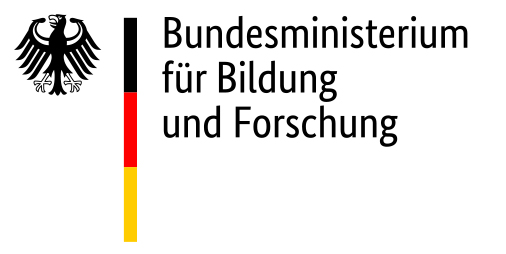
Four of these projects were presented there, one of them by Erb himself: Since the first CETCH prototype was not yet efficient enough, the artificial cycle was optimized and the synthesis in the laboratory was highly automated, miniaturised and digitised. This made it possible to significantly increase the efficiency. “With the CETCH cycle, we have built an operating system – now we are trying out different ways of applying it”, said Erb in his lecture. This ranges from the initiation of the metabolic pathway in natural algae cells to the construction of artificial cells in the form of microfluidic droplets. “In this way, we have built artificial chloroplasts that are powered by light”.
The CO2BioTech network eCO2DIS will now bring together approaches from synthetic biology, bioelectro-catalysis and polymer chemistry. Using a synthetic acetyl-CoA reaction pathway, the network aims to synthesise valuable chemical compounds directly from CO2.
Pathways to a climate-neutral industry
Research into a CO2-neutral industry is also gathering pace. In addition to Erb’s team, other research groups are working on the development of CO2-binding systems for direct integration into industrial processes – based on highly innovative ideas.
A team led by Volker Sieber from the Straubing campus of the Technical University of Munich, for example, has set itself the goal of initially converting CO2 and hydrogen into methanol and using this as a raw material for fermentations or enzymatic processes. For example, an enzyme cascade without cells can be used to produce the amino acid L-Alanine from methanol, which is used in parenteral nutrition and in dietary products. In the CO2BioTech Pythagoras project, Sieber’s team is further developing enzymatic amino acid production from green methanol obtained through wind energy and aims to elevate it to an industrially relevant level.
Ulf-Peter Apfel from Ruhr University Bochum aims to combine biology and chemistry for CO2 recycling, using so-called power-to-methane systems. Together with his team, he has developed a bioelectrochemical system that enables renewable electrical energy to be stored in the form of methane. In the BEFuel collaborative project, a combined bioelectrochemical process for the material utilization of CO2-containing exhaust gases is to be developed. It is intended to particularly allow the production of high-quality acids and alcohols.
The chemical company BASF has also recognised the potential and is already collaborating with the biotech company Lanzatec to utilize CO2 through bacteria in order to create products such as n-octanol, which is used in cosmetics, among other applications, through gas fermentation. Additionally, project manager Barbara Navé presented the company’s activities in the CO2BioTech FUMBIO network at the Biotechnology Days, where the focus is on establishing a sustainable value chain for biobased production of the platform chemical fumaric acid.
Whether these approaches will make a significant difference in the fight against the greenhouse effect and climate change remains to be seen. Certainly, they are ideas of high innovative power that address one of the most pressing issues of our time. We have deforested our forests, drained our wetlands and poisoned our seagrass meadows – now Homo sapiens has a small window of time left to show that he truly deserves this designation.
Sources:
With artificial photosynthesis against climate change
High-profile award for Marburg Max Planck researcher
Leibniz Prize for Marburg Bioengineer
Artificial photosynthesis: The Decisive Step Forward | Volkswagen Foundation
Artificial photosynthesis: Better than Green | Volkswagen Foundation
Biotechnology Days 2024: Diversity for a Climate-Neutral Industry


